![]()
GOLF & COVID-19
The COVID-19 pandemic has brought the world to it's knees in 2020, and the after affects will be felt for decades.
The world we knew has gone forever!
Some of the obvious areas impacted by COVID-19 include:
- the economy
- personal space
- the way we work
- use of technology
- where we live, perhaps outer suburbs with larger backyards will be popular again, or a move to the country will be attractive
- how aged care is managed
- use of public transport
- how we regard health workers, police, politicians
And golf will change as well. Golf has had to adapt quickly to the regulations imposed at the different stages of COVID-19 lock down.
In Melbourne, the golf clubs have done an excellent job keeping us safe and staying open for as long as possible. Pop-Up Cafes, take away meals, hand sanitiser, personal sand buckets, removing rakes, playing in masks ... the club adminitstrators and Golf Australia have done everything they can to keep our clubs operating and we are very thankful. But no amount of effort could keep them open during Stage 4 restrictions. At least the courses can still be maintained.
Here are some of the changes to golf that were brought about COVID-19 and the possible long term impact they might have on the game.
1. Flagsticks
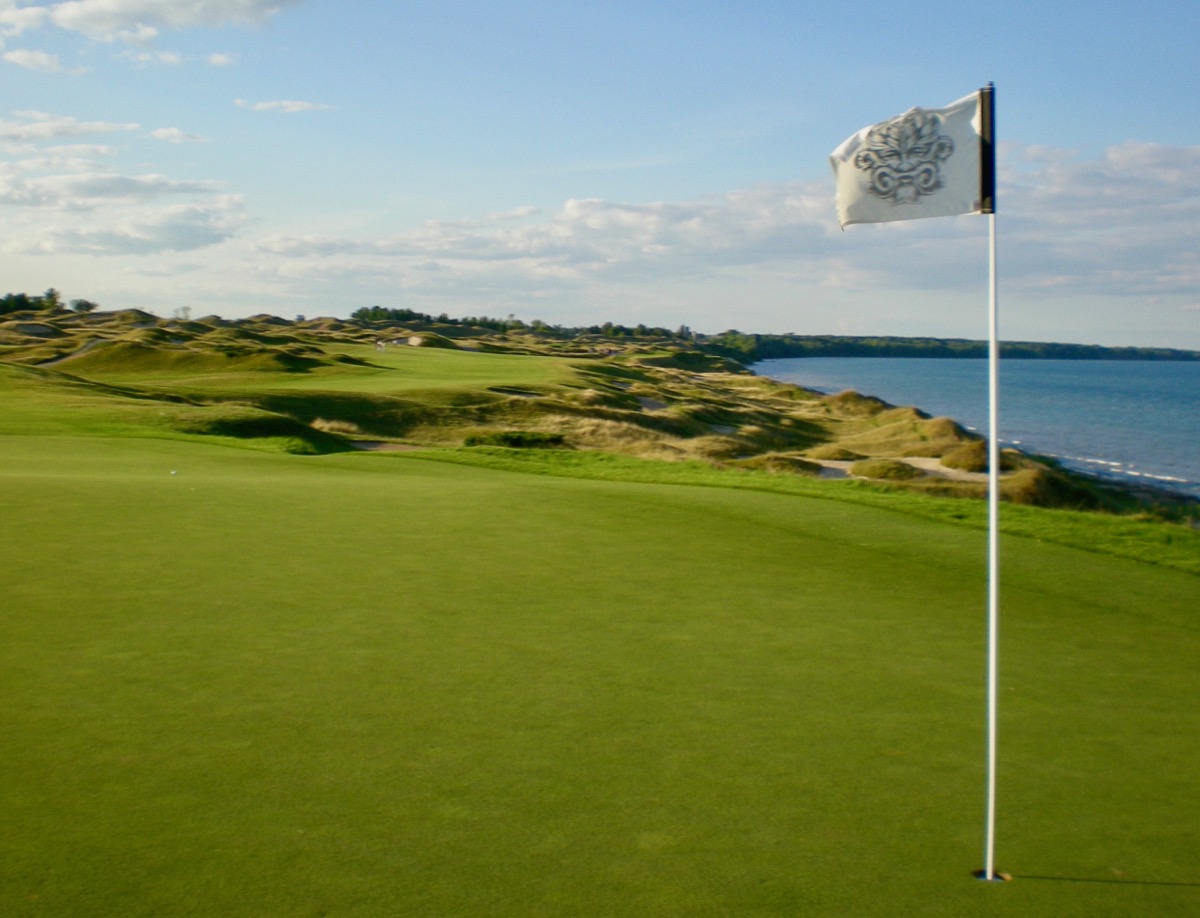 The whistling wind at Whistling Straits
The whistling wind at Whistling Straits
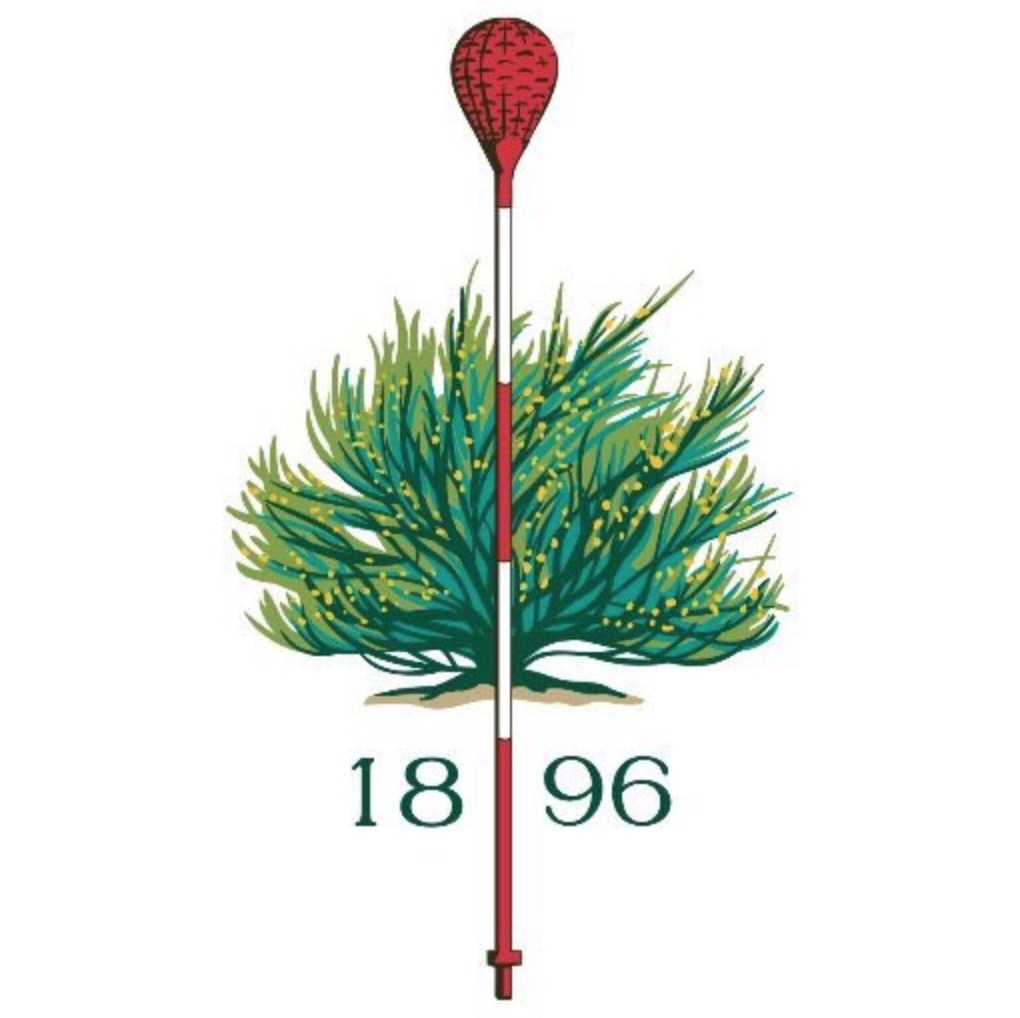 Merion GC- flagstick & wicker basket
Merion GC- flagstick & wicker basket
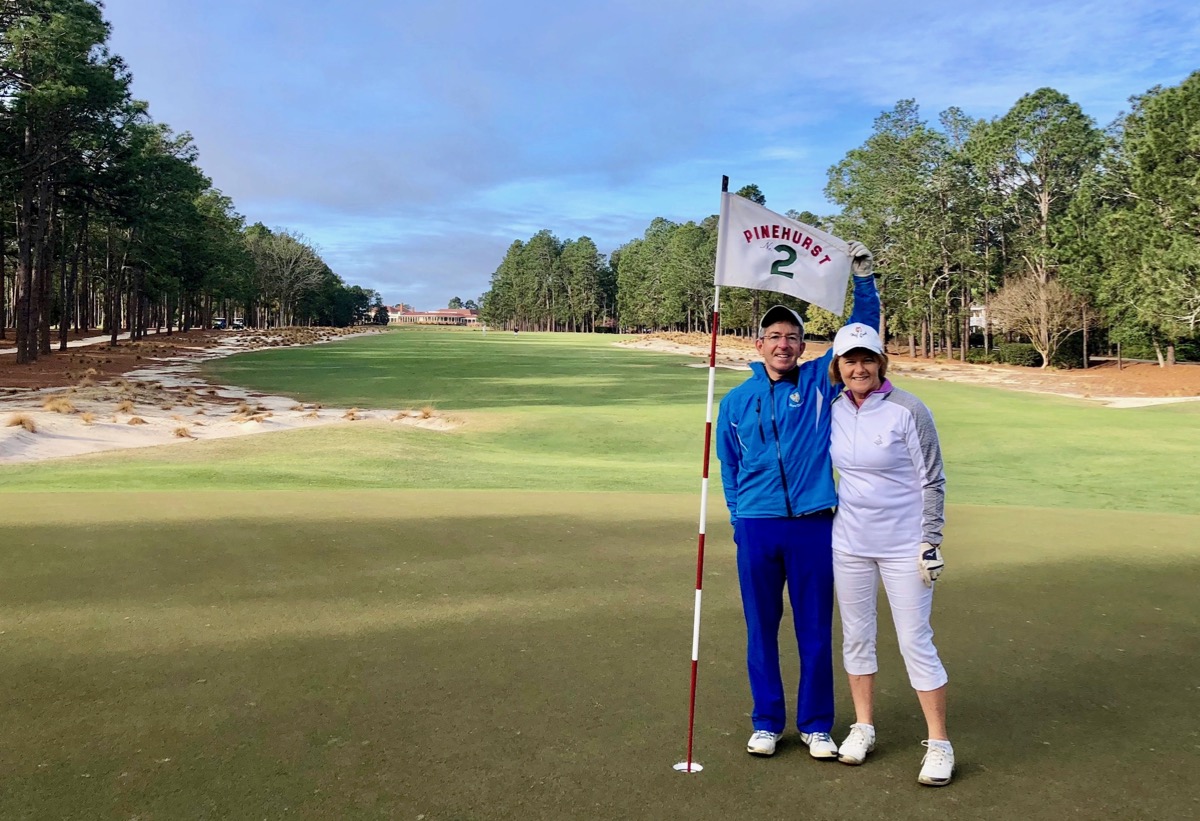 Pinehurst no 2- looking back down hole 1
Pinehurst no 2- looking back down hole 1
Before the pandemic hit the R & A made some changes, one of which was the ability to leave the flag in while putting.
The timing was opportune as golf under COVID-19 demands no touching of flags sticks, rakes or anything else touched by other golfers.
Different clubs have employed different technicques to make sure we could leave the flag in and still retrieve the ball safely. Some turned the base of the hole upside down so the ball did not drop far, and others simply placed a foam ring in the hole.
There is no doubt that leaving flags in speeds up play, and as such is an important issue.
Prior to COVID, with flags in and balls falling to the bottom of the hole, holes were being damaged by so many hands attempting to claw out the ball.
When the ball sits higher on foam the hole edge is not damaged nearly as much.
If we can have flagsticks designed that are less likely to bounce the occasional ball away, it would be a step forward in convenience and speed of play to continue this policy after COVID.
2. Bunkers
 Do we need so many bunkers to make golf interesting?
Do we need so many bunkers to make golf interesting?
The modern golf course is dominated by bunkering to penalise the errant golfer and add interest and strategy.
This a throwback to golf's origins in the sandy terrain along the Scottish coastline where sheltering sheep and erosion caused natural blow outs on the golf course.
Unfortunately bunkering is not so well suited to different soil types and the maintenance of bunkers on clay based and other similar terrains carries a significant cost in terms of time and money.
With suburban golf clubs struggling to stay afloat, the relevance of so many bunkers must be questioned.
During COVID golfers are not permitted to touch rakes and so golfers are instructed to take preferred lies, either in the bunker or out depending on the club in question.
And there is no doubt that playing bunker shots and then raking the bunker slows play down.
Personally I think a chip/flop/bump shots through rolling terrain is much more interesting, and quicker than playing from a bunker.
I hope that over time, clubs will reduce the number of bunkers on suburban courses and rely more on a variety of undulating turfed surrounds to add interest to the short game. Food for thought.
3. Fairways
 Victoria GC- the 7th hole is all carry off the tee
Victoria GC- the 7th hole is all carry off the tee
These days with pace of play so important the suburban clubs have largely eradicated any rough between tee and fairway ensuring the poor tee shot is easily found and that the lesser golfer is not penalised or demoralised.
The premier courses around the world take a different approach and are prepared to challenge golfers to carry the ball off the tee.
Natural grasses or waste areas off the tee not only look better, but dramatically reduce the amount of fairway to be mowed and the maintenance cost to the clubs. Walking tracks or cart paths can then be hidden out of sight in these areas. This would be much more appealing than the exposed muddy walk offs onto the fairway we see so much in winter.
I would love to see a lot less fairway off the tee and more native grasses off the tee.
Will it happen?
I am not sure that it will. Whilst clubs would be keen to cut costs, they also need to pack the numbers in, and anything that may discourage beginners, lesser golfers or slow play down might be overlooked.
4. Playing in Twos
 Teeing off at Lahinch GC
Teeing off at Lahinch GC
In recent months under COVID golfers have only been able to play in twos, and I can say that I have really enjoyed it.
The pace of play is much more reasonable, and you get the opportunity to really have a good chat for nearly 3 1/2 hours. Even a quick 9-holes has been enjoyable.
Will it continue?
No, much is the pity..
Clubs cannot afford for the courses to be clogged up with twos and will be booking in fours again as soon as it is allowed.
5. Electronic Scorecards
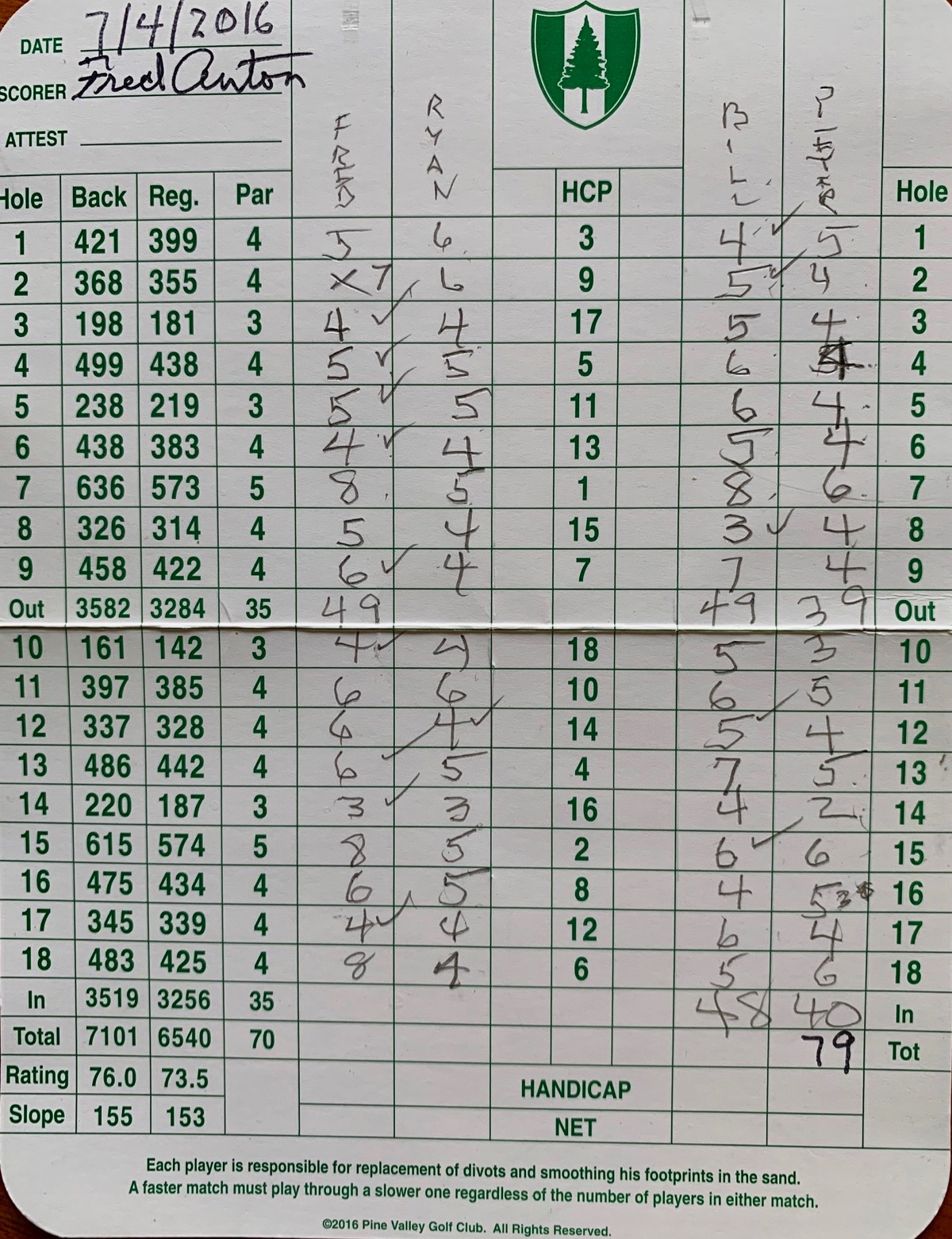 The Traditional Scorecard-Pine Valley
The Traditional Scorecard-Pine Valley
 Electronic scoring- The National GC
Electronic scoring- The National GC
We have all grown up with the traditional cardboard scorecard. We check into the club, enter the competition, pick up the scorecard, keep tally of each hole, and then confirm scores and sign with our playing partners before lodging the score.
Under COVID it was a revelation to enter online and use the mobile phone to keep score and submit.
It was all so easy and quick. This is the future.
Traditional scorecards are on the way out.
6. The 19th hole
 Cruit Island GC- 19th hole
Cruit Island GC- 19th hole
Under COVID we finish our rounds, submit the score electronically and head home.
One of the great pleasures of being part of a club is the camraderie to be experienced after the round when groups gather in the clubhouse to share a drink or get a bite to eat.
In many ways this social interaction is one of the more important facets of playing golf and being a member of a club, and will not change
Once the pandemic is beaten clubhouses will again be full of groups of four golfers joyously interacting with fellow club members.
May that day come soon!
7. Popularity of golf
Golf has been declining in popularity over the years, and suburban clubs have been feeling the pinch as aging members dropout and younger golfers don't join at the same rate.
But during this pandemic golf clubs have been booked solid for every available tee time every day. With so many alternative activities unavailable, no travel, no chlldrens's sport- golfers have been flocking to the golf courses all over the world.
The obvious benefits of playing in a safe natural environment, and the associated social benefits are compelling.
It is just possible that this upsurge might result in an ongoing rise in popularity for golf world-wide.
8. The Masked Golfer
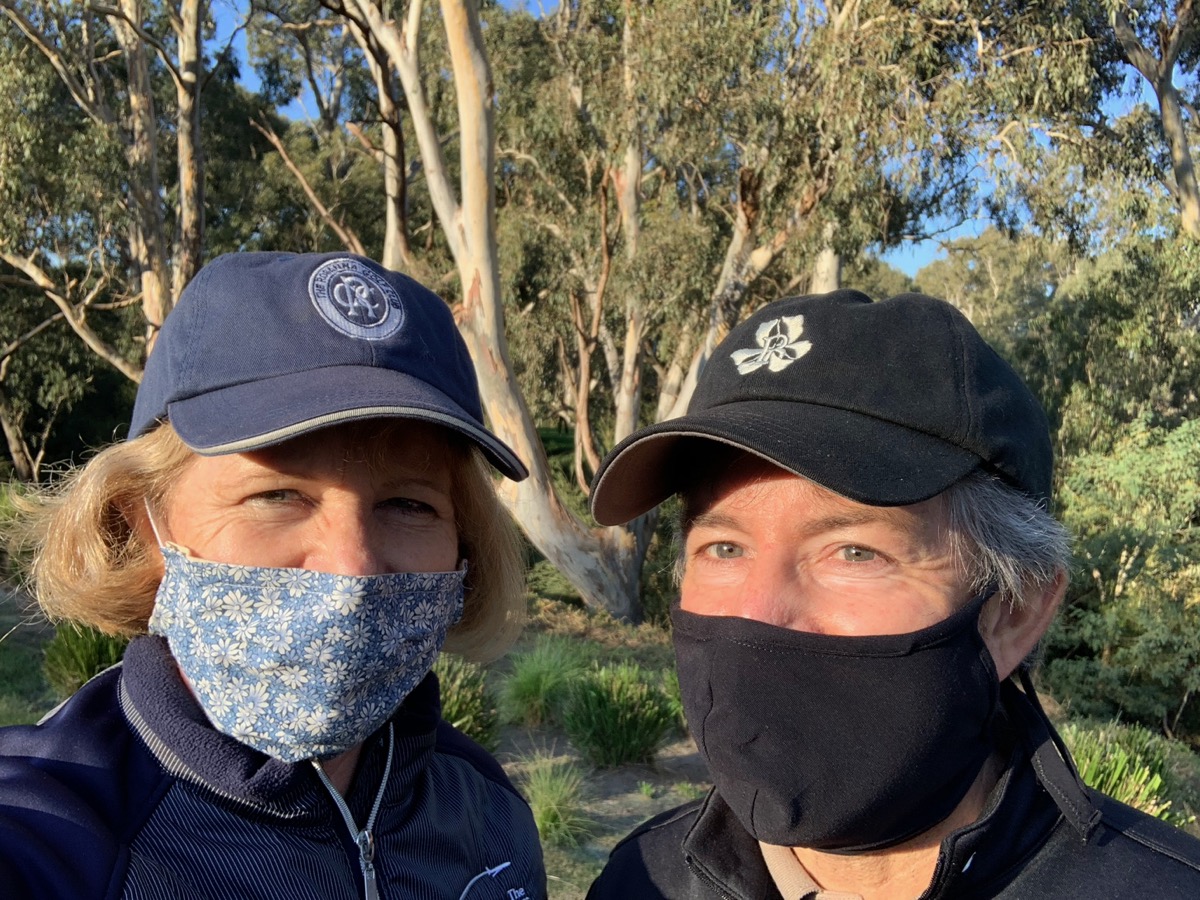 The Masked Golfers
The Masked Golfers
In Melbourne, our latest golfing outings required each individual to wear a mask.
Masks may well be a fact of life in the foreseeable future until a vaccine cure arrives.
I must say it has benefits - some of my mates look a lot better behind a mask.. And less need for sunscreen or lip protector.
But seriously as a golfer who wears spectacles, and constantly fogs up, I can't wait to get rid of the bloody thing!



